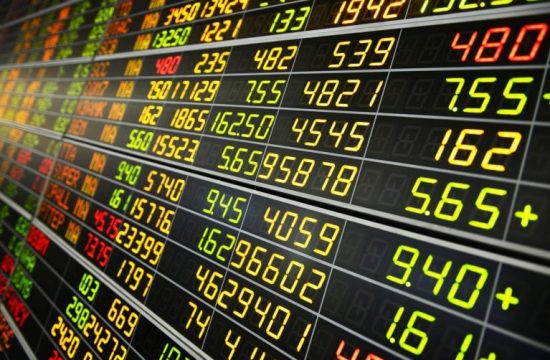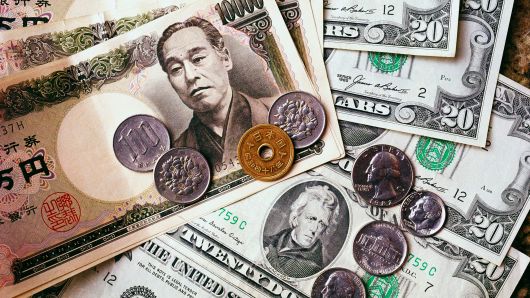By Giles Coghlan, Chief Currency Analyst, HYCM
It seems that everyone’s suddenly interested in supercycles again. Supercycles are usually characterised by sustained periods of strong demand in certain commodities that producers find difficult to keep up with, and can lead to price rallies that go on for years. The last commodity supercycle we experienced was in the early 2000s when China entered the global economy and commenced on a decade-long modernisation drive.
Other historical supercycles have included the ramping up of armament production in the run-up to WWII, followed by the reconstruction and re-industrialisation of Japan and Europe after the conflict. Many are now calling the beginning of a new supercycle as the global economy attempts to power itself out of the COVID-19 slump through the combination of massive amounts of monetary and fiscal stimulus, the undertaking of large national infrastructure projects, and the push towards green energy. But what does all this have to do with crypto?
Crypto Takes a Seat at the Table
The crypto market has been one of the major beneficiaries of the COVID-19 crisis. Part commodity, part currency, bitcoin’s stellar performance over the past year has been a testament to its resilience. 2020 saw it growing to fill the traditional role of gold as an inflation hedge, but also as an option against the excesses of the traditional financial system. Coincidentally, COVID-19 struck at a critical juncture in bitcoin’s own internal supply cycle, which set the stage for the massive price appreciation we’ve seen. Crypto was the best performing asset class of 2020, but while many are now attempting to call it the top, could the crypto market as a whole be entering its own supercycle?
Altcoins Coming of Age
The dynamics that are supportive of a supercycle in commodities such as copper and oil are certainly supportive of further appreciation in crypto prices, particularly bitcoin, with its fixed supply and geometrically decreasing issuance; but there’s much more going on in the space that demands attention. The promise of a scalable, proof-of-stake, smart contract blockchain has proven elusive over the past few years, with first-mover Ethereum continuing to struggle under transaction loads as it attempts to upgrade itself on the fly.
2021 is shaping up to be the year of the Ethereum competitor, with a number of projects gearing up to offer much-needed alternatives to the skyrocketing fees and perpetually crowded blocks that long-suffering Ethereum users have had to contend with since 2017. This is a story that’s not receiving much press at the moment, but a feasible rival to Ethereum’s smart contract capabilities could emerge this year, which could have potentially explosive consequences.
Keep an eye on the third spot in the crypto market cap rankings, as it has seen a lot of movement recently. Three solutions to Ethereum’s congestion have been vying for this place recently. From Binance’s centralised clone of Ethereum, allowing users to interact with decentralised finance applications for a fraction of the costs, to Polkadot’s parachain solutions for easing Ethereum congestion, to Cardano’s purportedly fully decentralised and scalable proof-of-stake blockchain that’s on the eve of launching native assets and smart contract support. Remember that these insuperable scaling issues were partly the cause of animal spirits cooling down during the last bull market in 2017. Could 2021 see some of 2017’s promises finally being delivered?
It’s All About Yield
It’s difficult to overstate the importance of yield in the crypto space. Far from being the non-productive bearer asset, it was in 2017, the emergence of proof-of-stake as a viable alternative to bitcoin’s proof-of-work and the explosion of decentralised finance is leading to a revolution in what people use crypto for. DeFi has allowed individual users to lend to each other without intermediaries for the first time, and staking theoretically gives crypto holders the ability to also be miners, using their existing holdings to generate more coins.
Of course, some of the crazier yields being thrown around in DeFi are clearly unsustainable; however, the fact that crypto dollars yield more than Fed dollars reveals a lot about the comparative velocity of money in the two worlds. Also, a 6-12% passive income for holding and staking a token that could just end up being an Ethereum killer is an opportunity many crypto investors are finding difficult to resist. Especially with yield being so hard to come by in traditional finance, it’s only a matter of time before more capital floods into crypto seeking these higher yields.
Final Thoughts
In this regard, bitcoin is a gateway drug for institutional investors. They inevitably find themselves going further along the risk curve in search of alpha, first from bitcoin to ether, and then gradually hedging their ether exposure by allocating capital to its rivals. They may come for the digital gold, but they will end up staying for the passive returns.
Ultimately, it may come down to a perfect convergence of factors; a global pandemic that leads to a massive increase in the global money supply. This coupled with an increased demand for commodities as economies gear up to return to normal. In such an environment, anything that’s scarce receives a bid. This includes crypto assets, which find themselves at a critical moment of their own development. The promises from the previous cycle finally have started to come to fruition. Meanwhile, in the interim between the last bull market and this one, more and more investors have become convinced of the need for both sound money and decentralised systems that allow for frictionless financial interactions without the need for intermediaries. The moral of the story? We’ve come far, but there may be much further to go before this bull market is exhausted.
Note: Cryptocurrencies are not available for trading under HYCM (Europe) Ltd and Henyep Capital Markets (UK) Ltd.
About HYCM
HYCM is the global brand name of Henyep Capital Markets (UK) Limited, HYCM (Europe) Ltd, Henyep Capital Markets (DIFC) Ltd and HYCM Limited, all individual entities under Henyep Capital Markets Group, a global corporation founded in 1977, operating in Asia, Europe, and the Middle East.












